We in the comic book world have come to place a heightened sense of importance on a centennial release. And these days in particular, it can signify quite an accomplishment to have released 100 consecutive issues of a given title, one that’s well worth earmarking. But for something such as this Newsletter, the 100th release is materially no different than the one that came before it and the one that will come after it. It doesn’t signify the end of a year’s worth of publication—that will come in four more weeks. But it does mean that rather than requiring two digits, the release number on each installment will now require three. So thanks for following for this long, and hopefully we can keep on continuing to do the thing that we do well into the future.
An interaction online brought back and underlined some thoughts I’ve had in the past about the way that we comic book fans tend to conflate the creators of our favorite series with the characters, according one person a moral high ground simply because we like their work. And I suppose there’s no way around such things, though it can make matters dicey for those of us actually dealing with one another as fallible human beings rather than simply a name in a credit box. But that urge to want to forgive anybody whose work you enjoy of any bad behavior as none of it impacts the reader directly is an interesting phenomenon. Sorry if this whole point seems vague, I neither want to unpack the sum total of the interaction here nor litigate the situation it was in reference to. The whole matter just reminded me of something that I already knew, and so I was inspired to share that knowledge with you. Please keep in mind, your favorite comic book professionals don’t necessarily wear white hats or black hats, they’re a lot more complex and difficult to pigeonhole than a simple binary.
On pleasanter matters, former newspaperman Mike Sangiacomo reached out my way to offer me membership in the newly-formed SIEGEL AND SHUSTER SOCIETY, dedicated to the preservation and advancement of the Man of Steel and his Cleveland-homed creators. I am member #23, which makes a certain amount of sense when you realize that Superman’s great foe Luthor made his first appearance in ACTION COMICS #23. Given my Marvel loyalties, that seems appropriate. In any event, membership in the organization is free, and those like-minded souls who might want to join these august ranks can find the information you’ll need either at this website or else at the group’s dedicated Facebook page.
Okay, time for me to turn the microphone over to you lot and see what’s on your minds. Beginning with a correction concerning last week’s story about my old Christmas card.
Adam
The text is actually from Tom Lehrer's A Christmas Carol, a song I know very well. In fact, the image itself says "Lyrics copyright @ 1991 Tom Lehrer." Of course, you wouldn't even need to do that anymore, since Tom Lehrer released all of his songs into the public domain a few years ago.
You’re quite correct, Adam. I momentarily confused it with Walt Kelly’s “Deck Us All In Boston Charlie” which we considered using but pivoted away from.
Chuck Ricketts
Just curious. Back in the 80’s and 90’s there were popular runs by some creators that I just didn’t get to or didn’t finish but was curious about, so I put these titles on my “someday later“ list.
I recently decided “someday later” is now! I have been able to start the someday list and have collected some of the Marvel Visionaries books for Peter David’s run on the Incredible Hulk. Never read it. I am really enjoying what I have read so far. I am still missing a few volumes.
I also picked up the John Byrne Fantastic Four run from the Marvel Visionaries books. I originally collected the run in the 80’s but stopped after Secret Wars. I was not a fan of Ben Grimm not being on the team, but was always curious what happened later.
Same thing with Simonson’s Thor. I finally have the Visionaries books to finish that creator run as well.
Any other suggestions on creator runs from the 80’s and 90’s that might be worth checking out now?
That’s a tall order, Chuck, especially not knowing what you have and haven’t read already and where your tastes lie. But I would think that, when it comes to the Marvel books of those eras (as that appears to be what you’re focusing on) I might try Frank Miller’s DAREDEVIL runs, Chris Claremont’s long tenure on UNCANNY X-MEN and maybe Mark Gruenwald’s SQUADRON SUPREME series. Also the two Michelinie & Layton & friends runs on IRON MAN.
Jim Zub
I would like for you to describe one of my comic stories as a "whamma-jamma" some day...
Well, y’gotta be in it to win it, Jim. But you seem to be doing pretty well with all of the good notices your current CONAN run seems to be getting.
Zach Rabiroff
I was chatting the other day with a veteran creator who was ruefully remembering the challenges of working on one of Marvel's licensed books back in the day, and the particular pain of navigating the particularly demanding licensor in question. I imagine that process looks quite a bit different in the era of Disney, Lucasfilm, Fox, et. al., but that certain similar challenges remain the same.
So my question is: what shape does the approval process take for Marvel's licensed (or parent-company-affiliated) books these days? Does it look different for properties from one division versus those from others (e.g. is there a different process for Star Wars than there is for Planet of the Apes)? And what, in general, makes a successful pitch that can navigate the tricky obstacles of a licensed book?
Every licensed property is different, Zach, and that includes the ones that may reside under the common Disney umbrella with Marvel but which are not a part of our stable of characters. In every case, you need to get approvals and sign-off at every stage of the game, and to make adjustments or alterations or even throw out complete ideas whole cloth depending on what the folks who actually control the property have to say. It’s probably a bit more challenging to navigate, say, the Star Wars books, as that universe has a bevy of other material, films and television and animation and prose, all being developed at the same time, than it might be for other properties that have less going on. But in every instance, it’s incumbent upon you to understand the situation and the relationship and to act as a good partner to the people whose intellectual property you are borrowing. Of course, you need to advocate and argue for what your creators want to do, but it all comes down to you being convincing enough to get those in charge of the property to agree to whatever story you might be trying to do. And you can’t get too upset when something doesn’t go your way—that’s the nature of the beast in licensed publishing.
Purdin
And I didn’t know you had a break-in - however long ago it was! That’s awful and I hope they didn’t get much. Very sorry to hear it.
it was more than a decade ago, Rickey, and everything that was replaceable has long since been replaced. I did wind up having my copies of FANTASTIC FOUR #21-38 lifted in that heist, which was troubling. But I was buoyed by the fact that the criminal didn’t know what he was taking, and if he’d pulled from that bookshelf a few inches to the left, he’d have gotten the first dozen issues of the series, which would have been a lot more costly to replace.
Murewa Ayodele
What are thoughts and experience with an anthology series of sequential stories? For example, Wolverine: Black, White, and Blood #1 has three short stories by Gerry Duggan, Matthew Rosenberg, and Declan Shalvey. Is there a world where all subsequent issues of the series have stories by these same three creators, and those stories are serialized?
There certainly could be, Murewa, if that was the sort of project that was being built. On all of the BLACK, WHITE AND BLOODs, as you know, we’ve used completely different creators, such as yourself, on different issues. That’s the appeal of those projects, to see what different people do with the characters and the limited color approach. But other anthologies could have one or more stories that run the entirety of the project. The upcoming BLOOD HUNTERS anthology that’s a part of the BLOOD HUNT crossover has one of its stories do just that, lasting the length of the project’s four issues.
JV
what do you think Dikto's intent was for the Green Goblin's secret id?
He introduces Norman Osborn a few issues earlier as a sinister figure (the Storm affair, shady business, etc)...but the rumor was he wanted the Goblin to be revealed as a 'nobody' - even though I feel that does not track as that was the crime master reveal just a little earlier.
What is your best guess/research indicate? Was it Norman or someone else?
Ditko related on multiple occasions in his later years that he had intended for the Green Goblin to have been Norman Osborn, and that’s why he had been establishing Norman in the background as a member of Jameson’s club before bringing him and his son Harry more fully into the series once Peter Parker went off to college. So I have no reason to doubt him. I suspect this story got conflated at some point with that of the Crime Master, who turned out to be somebody that Spider-Man didn’t know at all.
Manqueman
re the Age of Krakoa: did Hickman write a bible taking the concept up to a conclusion or did White at some point become the show runner as it were, taking Hickman’s place? Did Hickman have any endgame in mind that’s showing up in Fall of X?
For that matter, has G.O.D.S. involved him writing a bible for stories by others down the line?
Jonathan did write a relatively extensive treatment of what he wanted to do in HOX/POX and beyond, Manqueman. But he didn’t include any plan for dismantling those concepts, that would be somewhat self-defeating. There were both short and long term plans in his document, many of the ideas of which have been incorporated into what Jonathan’s successors have been doing on the X-Books since his departure. And on G.O.D.S., while there is a possibility of spinning off other series from it, none of that was specifically laid out in Jonathan’s treatment for that series either.
Paul Constant
Concrete was such a revelation for me as a kid. I think it served as a bridge between superhero comics and alternative comics. Tom, did any particular comic do that for you as a young reader—wake you up to the idea that comics were a medium with endless possibilities, and not just an adventure-delivery system?
I don’t know that there was any one particular series that did this for me, Paul. All that really had to happen was for my tastes to loosen up, as they did over time. As that occurred, I began experimenting with all sorts of books, especially those that were launching in the newly-established Direct Sales Market in the early 1980s. As I grew a bit tired of the typical Marvel and DC releases, I was fortunate in that there were a bevy of new publishers who were attempting to enter the marketplace with a variety of series, some of which were very appealing to me.
Steve Levine
it appears as though there are more writers today freelancing both for DC and Marvel (Chip Zdarsky, Phillip Kennedy Johnson, Kelly Thompson, Gerry Duggan, Jason Aaron, Bryan Edward Hill, Steve Orlando, etc...). Are exclusive contracts for writers less common than they seemed to be in the past? And is there a different calculation on hiring writers to be exclusive vs. artists? And I am right on this, or only just noticing this now because I am aware of different talent.
There’s always a bit of an ebb and flow when it comes to exclusive contracts for talent, Steve. Typically, you use them to lock up players that you think are going to be important to your business for the next number of years. And every once in a while, something sets off a feeding frenzy where all of the companies circle their wagons and attempt to protect their people from one another, all the while attempting to recruit players from the other side. The downside, of course, is that not everybody you give an exclusive deal to works out perfectly, and so some of those agreements reach their end and are not renewed. At the moment, we seem to be at a place where everybody is more concerned about overspending than protecting talent. But it will only take one shift, one defection, to change the game again—assuming it’s the right one.
Taylor Murphy
a few days ago I read a forward by Marc Guggenheim from a Spectacular Spider-Man Marvel Masterworks volume (repurposed for the Spectacular Spider-Man Omnibus Vol. 1 collection), and Marc said Mantlo planned for Carrion to be Spider-Man’s clone from the smokestack (aka Ben Reilly). But then he scrapped the idea because he didn’t think it made sense for Spider-Man’s clone to try to work with the Maggia (agreed). I’m guessing he was pushing for Carrion to be Norman right after and that’s the idea that couldn’t make it past editorial?
I’m not sure where Marc got that piece of information, Taylor, but I stand behind my sources. It’s completely possible that one of the alternatives that Mantlo considered was making Carrion the smokestack clone. But that would have been after he was told that Carrion couldn’t be Norman Osborn. If you go back and look at Carrion’s first two or three appearances with the knowledge that Mantlo thinks he’s going to turn out to be Norman, all of the clues he drops slot perfectly into place. Whereas Carrion being Miles Warren is slightly dodgier, and works simply because the story insists that it works. The same would have been true of Carrion had turned out to be the Parker clone.
Jeff Ryan
In honor of your 100th newsletter, what would the Legacy numbering be, adding in all the pre-newsletter blog posts?
The mind boggles, Jeff.
Pierre Navarre
As a Doctor Who fan, what's your opinion about the spin-off Torchwood?
I thought it was entertaining enough, but never as tightly written as DOCTOR WHO was during that same time. And some of its attempts to be more adult in terms of its content were a bit laughable. So I like it, and I watched it all the way to the end. But it never struck me as being quite as imaginative or smart or well put together as the core show. If anything, it felt to me like a Joss Whedon Buffyverse wanna-be.
Nacho Teso
Is G.O.D.S. ending with issue #8? I assume that's what this tweet means (https://twitter.com/Marvel/status/1760425453666324692) but the wording is somewhat mysterious with that "for now".
As that tweet says, Nacho, G.O.D.S. will be ending for now with issue #8, as Jonathan moves on to another in-the-works big project that you’ll hear about in the future.
Modoktor1983
If you are able to, would you be able to give us some details on how the new DC Versus Marvel Omnibuses coming out in August came about? Is it a joint collab between DC and Marvel? And will this lead to other reprints of DC/Marvel titles like JLA/Avengers?
To be honest, I really can’t, Modoktor, as the first time I became aware that they were happening was when the DC reprint editors working on the two volumes reached out to me about providing Afterwords for the books. But yes, by definition they are collaborative productions, though the volumes are being assembled by DC. And no, their existence doesn’t necessarily mean that there is anything further coming, either in terms of other reprint collections such as AVENGERS/JLA or certainly not new crossovers.
Stuart Perks
As the May 2024 solicitations are released it made me wonder why are editors never listed there as part of the creative team ? I know from reading your newsletter the contribution they make to the final product. But names such as Ellie Pyle and Wil Moss only ever appear on the inside of the comic., not even on the cover.
I’m maybe going to be blunter than I mean to be here, Stuart, but the reason why is that nobody cares—nor should they. The whole reason that creator credits are on the covers is as a sales and marketing tool. There are readers who are more likely to buy a given series if a creator they like is working on it. But nobody (or at least very few people) care who is editing any project, and certainly not to the point where it affects sales. Editing is the invisible art, and so it’s the duty of the editor to work behind the curtains to pull a project together and get it out on time while the creators are the ones in front of the curtain putting on the performance and taking the bows. The only reason to have an editor’s name on the cover would be to stroke somebody’s ego. And like Don Draper said, that’s what the money is for.
callie
I just found this newsletter as someone who's been reading comics for 3ish years and god Tom seems like such a chill guy. Not just a comic book creator but clearly with such a passion for them, I honestly wish I could just sit down and talk with him for a few hours about all the stuff he's worked on, his passions, just all the random fun facts he knows and little tidbits he remembers from decades ago.
Very nice of you to say, Callie. And while I’m not yet at the point where I’m setting up hour-long one-on-one conversations with readers of this feature, i have done and continue to do a decent number of podcasts and video casts, many of which can be easily located. After just one or two of them, I guarantee that you’ll have had your fill of me. But if you’re a glutton for punishment, here's a good one from a couple of years ago that you can sample.
Graham
I recently read Kraven’s Last Hunt as part of a Spider-Man Epic collection. It feels so ahead of its time! Everything else in that collection was fine but very of its time whereas this story almost feels like it could’ve been published today. What was your experience with it? Did you read it at the time? How do you feel about a story like that with one creative team being told across three titles?
Sadly, Graham, I wasn’t really reading the Spidey books when Kraven’s Last Hunt came out. I had dropped them back during Roger Stern’s tenure and I wouldn’t pop back in until Todd McFarlane. So I was aware that the story was coming out, as I was still following things like AMAZING HEROES and so forth, but I didn’t really read it until i was on staff and it had been collected in a single volume. I do remember people excitedly telling me that it was “as good as WATCHMEN”, which I thought was nonsense when I finally cracked it. But it was a good, strong story that made a big impact in its time and is still held as a high water mark today. It’s still just about impossible to tell a Kraven story of any sort without feeling like you’re operating in the shadow of it. I also thought that running it across the three Spidey titles of the time was a very good idea, as it allowed the adventure to play out over only two months as opposed to six. It might have overstayed its welcome if it had all been in a single book.
Behind the Curtain
.What you’ll see below is seven out of eight pages of a pamphlet that was being worked up to be sent to would-be writers who wanted to pitch stories to Marvel. This was something initiated by Jim Shooter, who, given his own experience with breaking into the industry through a blind submission, was always sympathetic to others attempting to do the same. It was drawn by Rick Parker, a very funny cartoonist who would later work on BEAVIS & BUTTHEAD and who was also a letterer and Bullpen production person. The entire endeavor was abandoned after Jim was let go, but these copies were still floating around in 1989 when I interned at Marvel, and so I ran myself off a set. To this day, I’ve never seen the missing page turn up anywhere, which is a shame.
This one is especially funny to me, as I’ve heard assorted different versions of the sentiment that’s expressed to the right. And I’m absolutely certain that the staff members at DC say the exact same things about Marvel concerning the exact same story elements. Everybody wants the competition to be turkeys.
Weird BATMAN television show reference there on the left. I assume it’s just trying to be funny, but what a strange thing to be worried about in 1987. Were people really submitting a lot of stories in that vein?
Pimp My Wednesday
Hey, good stuff coming at you! Hope you’ve saved up your pennies!
Chip Zdarsky has gone on record correctly saying that getting a compliment from me is like seeing a unicorn. They’re rare enough that he and Gerry Duggan coined the term “A Tompliment” to describe the rare instance when I say something positive such as “it was all right.” But let me tell you—and I really don’t like to say such things about a book I worked on—AVENGERS TWILIGHT #3 is a really good issue! The preliminaries and the set-up are over and so now Chip and collaborator Daniel Acuna can get to the heart of the matter. This issue has at least three legitimate stand-up-and-cheer moments in it, one of which was a part of my initial story notes many years ago. I’m sure that you’ll all tell me that I’m wrong, but I think this one really gets wood on the ball. My highest personal recommendation.
Also very satisfying is this final issue of the new PUNISHER series, wherein David Pepose and Dave Wachter complete Joe Garrison’s transformation from a vengeance-seeking widower to a true successor to the war formerly waged by Frank Castle. It’s one of the few legitimate regrets that I feel shifting over to the world of X, that I won’t be able to follow up on this series myself, and will need to leave Joe to other hands. But I’m very happy with how these four issues turned out, and the reaction from most fans seems to be equally positive. That’s a really clever Rod Reis cover image, too.
And Associate Editor Annalise Bissa is releasing GIANT-SIZE FANTASTIC FOUR #1 this week. Now, if you’re like myself and were hoping to see colossal 25-foot versions of the FF, get set for disappointment. But if what you’re looking for is a cool new story by Fabian Nicieza and Creees Lee that introduces a new character from the dim past with a familiar name, then this one has got you covered. There’s even a classic reprint by Stan Lee and Jack Kirby filling the book out, which is probably worth the cover price all by itself.
And we’re into the home stretch on AVENGERS UNITED, with issue #21 beginning the fifth and final chapter of this 25-part epic. Having learned the truth, it’s time for the Avengers to take action—even if that means instigating a regime-change among the people of Ghesh! Derek Landy and Marcio Fiorito bring it to you.
A Comic Book On Sale 70 Years Ago Today, February 25, 1954
It was supposed to be the big revival of the super hero characters that had carried Timely Comics to prominence during the World War II era, but the 1950s revival of the Human Torch, the Sub-Mariner and Captain America in the pages of YOUNG MEN COMICS wound up burning fast and bright before returning those heroes to limbo once more—all except the Sub-Mariner, whose self-titled solo series was kept going to help support a proposed live action television series that never materialized, and which would have starred Lloyd Bridges in the title role. So why did this initiative fail? It wasn’t due to poor artwork, as creators such as Dick Ayers, Bill Everett and John Romita worked on these stories. The problem, I expect, was the stories themselves. They were all too short, typically running between 6-9 pages, and none of them had a lot of depth in terms of characterization or human interest. They were undemanding, slight, even. They were solidly crafted but lacking in spark and life. It was the wrong approach at the wrong time, undertaken by Atlas (which is what the company was known as then) publisher Martin Goodman in response to the success of the ADVENTURES OF SUPERMAN television program and the hopes that it would lead to a resurgence in the sales of super hero characters. It did help to do that eventually, but Martin struck too soon and had pulled the plug before the proper moment had arrived. And so, it wouldn’t be until the early 1960s that these characters would see the light of day again. For fans who bought these books at the time, such as Roy Thomas, these seemed to be the last stories there’d ever be about these once-great characters. In this final issue, the Human Torch faces the return of one of his few costumed foes, the Vulture, Captain America and Bucky have to prevent drugs from being smuggled into South Africa, and Namor turns away a Soviet attempt to colonize the Antarctic.
A Comic I Worked On That Came Out On This Date
This fourth issue of MARVELS: EYE OF THE CAMERA came out on February 24, 2009, though for a good long while it was uncertain that it would ever see the light of day at all. This was a long-gestating project, one that sat on my List of Embarrassment (devoted to projects that had been started but which had stalled out before completion) for a good long while before I was able to strike it from the list. It was also a project that I undertook “to block” in the parlance of the Hollywood Squares. You see, six or seven years earlier, having realized that the collected edition of the original MARVELS series by Kurt Busiek and Alex Ross was one of Marvel’s best and most consistent-selling series, Marvel president Bill Jemas decided that he wanted to come out with a follow-up. And in fact, what he envisioned was a MARVELS II followed by a regular monthly MARVELS series. Despite being told that neither Kurt nor especially Alex were likely to be inclined to produce such a project, Bill was adamant. So I reached out to Kurt and spoke with him about the situation. I don’t think that I was as direct as to tell him that Bill was going to go ahead with such a project whether he and Alex were involved or not, but it was definitely there between the lines. Fortunately, Kurt came up with a story that he wanted to tell, one that would end with lead character Phil Sheldon dying of lung cancer after a lifetime smoking habit. This presented a bit of a problem in that editor in chief Joe Quesada had recently prohibited smoking in any of the Marvel books. But Joe was a reasonable dude, and he understood that telling this story was clearly sending an anti-smoking message, so he permitted it to be done. Having had a bad experience with an aborted MARVELS II project years before, Kurt decided that he wanted to call this new attempt MARVELS: EYE OF THE CAMERA as a way of distancing it from the first series, rather than making it a direct sequel, especially without Alex. Kurt reached out to Alex about the possibility of him being involved with the project, and Alex indicated that he wasn’t interested. He was, rightly, a bit put off that I never reached out to him all through this process, but I didn’t really know Alex at all, and so I took Kurt at his word that he didn’t want to be a part of it. But this meant that we were going to need an artist—and anybody who might take the project on was going to be compared, likely unfavorably, to Alex. This stymied the project for a good long while, as we couldn’t come up with anybody that everybody agreed with. I recall that at one point, we were considering Dougie Braithwaite to do the book, but that fell through for some reason that I don’t remember. There was also a moment—and again, I don’t know that I ever related this to Kurt at the time—when Bill, upset that headway wasn’t being made on this project that he wanted, decided that he’d hire Max Allen Collins, whose graphic novel ROAD TO PERDITION had just been released as a movie, to write the MARVELS sequel instead. Pretty certain it was Joe who talked him out of doing that, but we were clearly existing on borrowed time here. So finally, we went with the best option that presented itself. Brian Haberlin had been working with a young artist, Jay Anacleto, who did a wonderful painted in pencil style. He suggested that we have Jay illustrate the series and then he would color it, making the eventual final work look as lush and fully realized as Alex’s. In practice, Brian wasn’t quite able to carry that off, but the end product was still relatively good looking. But there were two problems as we got things underway. The first was that Jay hadn’t been a deep dive comic book fan in the way that Alex had, so while he could work from the reference we provided him, the emotional connection that Ross had to the material was often absent. And secondly, Jay was slow. He wasn’t all that used to producing sequential pages as he’d mostly done covers and single images, and that slowed him down tremendously. We got a bit of a reprieve once Bill was sidelined and then left the company, as he was the one who was really sitting on top of this project wanting it to happen. The whole thing might have been spiked thereafter (and I do think that we wrote off a portion of the material at a certain point, never expecting it to all get done.) But I just kept encouraging Jay and Brian to keep grinding away at it, month after month, year after year. having invested a bunch of blood and sweat into it, I wanted the story to see print. Eventually, some six years later, we finally got there. And the book did only middling business. Readers simply weren’t all that interested in a MARVELS project without Alex Ross. We did arrange to release each issue in a black and white version as well, shot directly from Jay’s pencils. As nice as the color version is, I think that’s likely the best way to experience this story. And it is a very nice story that follows up on the original in a meaningful way, while simultaneously taking Phil Sheldon off the board so as to avoid him being used in odd ways, as had happened once or twice in the time after the first MARVELS was released. Still, even with Kurt writing, we didn’t really have the most essential element that made the original work a fan favorite. On the other hand, I do take some pride and solace in the fact that MARVELS: EYE OF THE CAMERA could have been written by Max Allen Collins and drawn by Doug Braithwaite, which would have been even further from the original source.
The Deathlok Chronicles
As he did in the past (and as I hope he continues to do as we move forward) DEATHLOK writer Gregory Wright showed up in the comments with some additional insight and corrections concerning what I wrote about DEATHLOK #2 last time. So here’s what he had to say:
Gregory Wright
I do have to make a correction. Dwayne and I didn't stop writing DEATHLOK together due to having diverging points of view on the type of stories we wanted to write. That may have seemed the case when you saw the stories we did write separately, but it was just what happened when we weren't combining our point's of view. We stopped writing together because I had moved from NY to VA and we discovered that the amount of time we spent on the phone long distance was costing us more money than we were going to be paid to write the book. The internet and chat rooms didn't really work for us at the time either. So it actually cost us money to write that first regular issue. Also the entire "Souls of the Cyberfolk" idea was planned by both of us before we ever got the book. It was always going to feature as part of the book if it went to a series. Dwayne was certainly the one who brought that into the creative discussions we had,and was going to take the lead with it, but it wasn't something he came up with after the fact. It was in our discussions and thinking the entire time. The CYBERNET was actually an idea I had had early on. We had planned a very basic idea for how that was going to be implemented along with the W.E.B. Dubois stuff. We decided that since that particular storyline was more of Dwayne's story, he would write it himself for his first arc. What he wound up doing wasn't really much like what we came up with together other than the Cybernet and Misty Knight being a part of it. Due to some office politics and backlash over the Cybernet and certain editors not wanting the characters associated with it, we sort of dropped it from the book. CYBERWAR was the name of my first story arc that got bumped back when we had the opportunity to use Punisher and GhostRider. Dwayne had no interest in using them so it fell to me to write those issues and move my CYBERWAR story back. Funny enough, I was supposed to bring back the John Kelly character personality in Cyberwar BEFORE Dwayne brought back the John Kelly brain. "monster". When it was decided we'd write different arcs, we divided up the stories we had planned to do originally. Had they been written together they would have been pretty different I would guess.
So DEATHLOK #3, seen above, was the first issue that was entirely in my hands as the editor. And it’s a really good issue. At the end of #2, we revealed that the person behind the murders of the assorted members of the Cybernet was Doctor Doom. Bringing in Doom in the second issue was a ballsy thing to do and made a big statement—though it turned out this wasn’t really Doom at all, as we learned at the end of this issue. But for most of the story, Deathlok and Misty Knight are on the back foot against the seeming Lord of Latveria. But in the end, Deathlok finds his cybernetic systems taken over and shut down by his opponent, who reveals that he is actually one of Doom’s robot duplicates that has somehow gained sentience. Having rechristened itself Mechadoom, it’s seeking some sort of understanding about just who and what it is. And Deathlok and Misty are both down and out before it. It was a great job by all concerned, terrific script by Dwayne, excellent art by Denys ably inked by Mike Manley. I was super happy with it when I first got printed copies, and I can recall flipping through it with pride at the train station waiting for my commute. It made me feel as though doing this wasn’t going to be all that difficult. Boy, was I in for a reality check in the months to come.
The thing I recall the most about this issue, though, was having a huge battle over this cover. You see, every cover that was being sent to the printer needed to go through a sign-off process with people in all of the relevant departments, everybody from the editor in chief to the sales department and circulation and so forth.it was about half-a-dozen signatures in total. Well, the circulation guy wouldn’t release the cover. He felt, wrongly as it turned out, that it was against second class postal regulations to have any copy on a cover that was bigger than that of the logo, as the background DOOM is here. I had to argue and negotiate on this point for what seemed like days before I could get him to see things my way. And the thing that did it was me making the DOOM see-through so that it was clearly less prominent than the DEATHLOK logo.
The Episodes
Not an episode at all this time, but it feels like this belongs in the same category, rather than inventing a different one for films.
If you had asked me at any point during the 1980s and 1990s who should play Spider-Man in an eventual film, I would have told you unreservedly John Cusack. Not only was he a wonderfully nuanced player in a string of teen comedies that ranged from surreal to heartfelt, but he also had what I can only describe as a John Romita look to him. He resembled Peter Parker naturally, even when he wasn’t trying, and was clearly capable of existing in that sweet spot where he could be both an awkward nerdish goofball and also a fast-talking smartass, and pull off both ends at the same time.
I really like Cusack’s body of work. But probably my favorite film that he was involved with was 1997’s GROSSE POINTE BLANK, an incredibly cool, incredibly funny super-black comedy in which Cusack plays Martin Blank, a contract killer who is grappling with an existential dilemma just at the moment when his ten year high school reunion is approaching. Required to perform a hit in the area anyway, Blank takes the opportunity to return to his old neighborhood, from which he vanished without a word on the night of his prom, running off to join the army. In doing so, he left behind what was clearly the love of his life, Debi Newberry, played with quirky substance by the terrific Minnie Driver. Now, Blank re-enters Debi’s life, finding a connection with her even while he’s stalked by a very funny Dan Akroyd as Grocer, who is intent on unionizing all of the button men in their line of work, an attachment that Blank wants no part of.
The script is super-sharp, highly stylized, the cast is uniformly great, but the film’s real secret weapon is an immaculately curated soundtrack that’s just about unbeatable. It was in my driving around rotation for a good long while. I ran across a reaction video for the film recently, and wound up watching it again for the first time in a few years, and it completely holds up, a very entertaining piece of work. There really isn’t anything else quite like it, and while there’s long been rumblings about a sequel, I sort of prefer that it remain a one-off. I don’t need anybody else to tell me what becomes of these characters after the movie ends.
GROSSE POINTE BLANK (a title whose multiple joke-layers indicates right off the bat the level this production is looking to hit) is available to stream on Hulu. And as usual, for those of you who’ve neve heard of it before, or don’t remember it, I’m going to leave you this link to the original trailer. It’s a good time.
Monofocus
The big news in this regard is that, after a number of months of threatening to do it, I’ve finally started a rewatch of THE SHIELD, the groundbreaking series starring Michael Chiklis as corrupt cop Vic Mackey. As with MAD MEN before it, I was a huge fan of the series and a regular viewer all throughout its original run from 2002-2008. This was the series that put FX on the map as a producer of quality original programming. Prior to THE SHIELD, it was all reruns and exploitative comedy. I remember THE SHIELD being a hard-hitting and uncompromising show, and having now rewatched the first half-dozen episodes, it may be more true than ever. it definitely isn’t a series that I could see being made today, the race component is just too strong in it, and our tolerance for shady police officers just isn’t there in the same way. But it’s damned entertaining, even as it makes you root for the people that you know you shouldn’t. Vic Mackey is the head of the Strike Team, an experimental anti-gang unit operating out of the fictitious Los Angeles district of Farmington. He’s an effective cop, mostly because he’s got no compunctions about running roughshod over suspects, putting drug dealers to work for him and engaging in outright illegal activities intended to line his own pockets and the pockets of the members of his team. What makes this all work is Chiklis’ strong, nuanced portrayal of the character. He’s somehow able to keep the viewer largely on side with Mackey even as he carries out the most heinous activities, only managing to stay one step ahead of the consequences of his actions by luck and willpower and just plain moxie. Chiklis is backed up by a strong ensemble cast, including Walter Goggins pre-JUSTIFIED as Shane Vendrell, the perennial screw-up member of the Strike Team who winds up going over the edge, Benito Martinez as David Aceveda, the self-serving Captain of “The Barn”, the precinct where the Strike Team is based, who hopes to expose Mackie’s criminal activities in order to further his own political ambitions, Jay Karnes as Holland “Dutch” Wagenbach, a bookish, intellectual detective in the mold of Richard Belzer’s John Munch who is obsessed with serial killers, and CCH Pounder as Dutch’s partner Claudette Wyms, the even-keeled senior detective in the squad. In later seasons, both Glenn Close and then Forest Whitaker came on for a single season each as antagonists trying to take Mackey down. (Reportedly, Whitaker was supposedly baffled by the fact that viewers hated his character—he was the good guy trying to expose a corrupt cop, but the audience’s sympathies lay with Chiklis’ Mackey even then.)
And you can see a trailer for the show at this link
Posted at TomBrevoort.com
This week, I posted what turned out to be a pretty popular piece analyzing when Wolverine became the Wolverine we know.
And five years ago, I wrote about the Five Best Comic Books of 1980.
They say that the first hundred issues are the toughest, so it’s all going to be downhill sailing from here, I expect. My thanks for being an ever-growing and always appreciative audience throughout the past almost-two years. From here on in, we’ll keep keepin’ on—so I’ll see you all again in one short week’s time.
Hat’s All, Folks!
Tom B

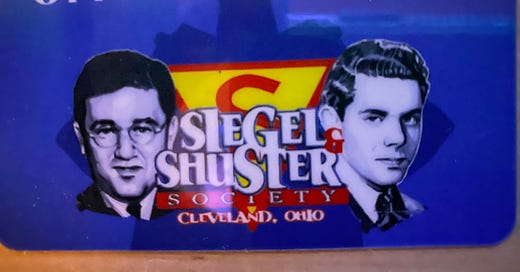



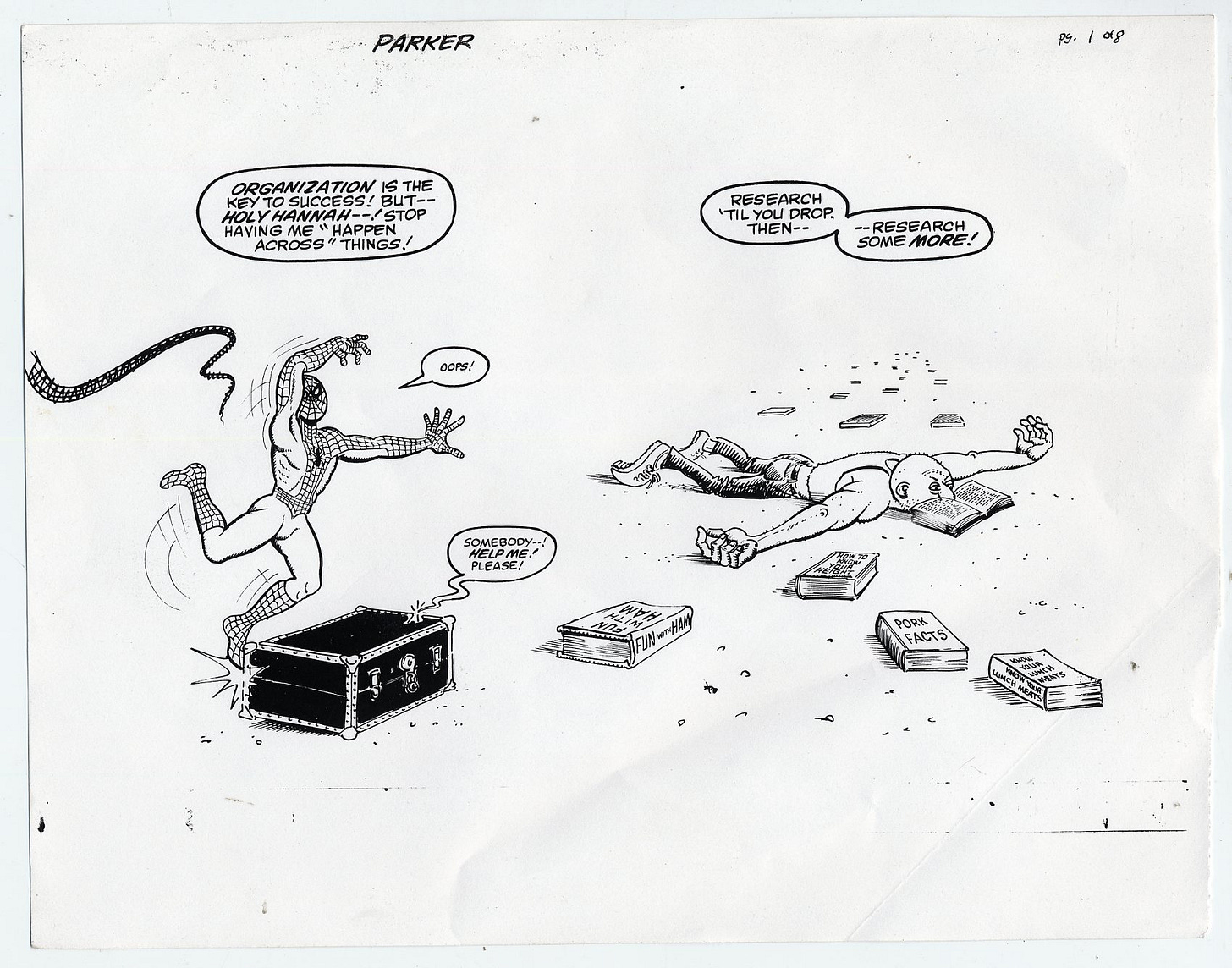
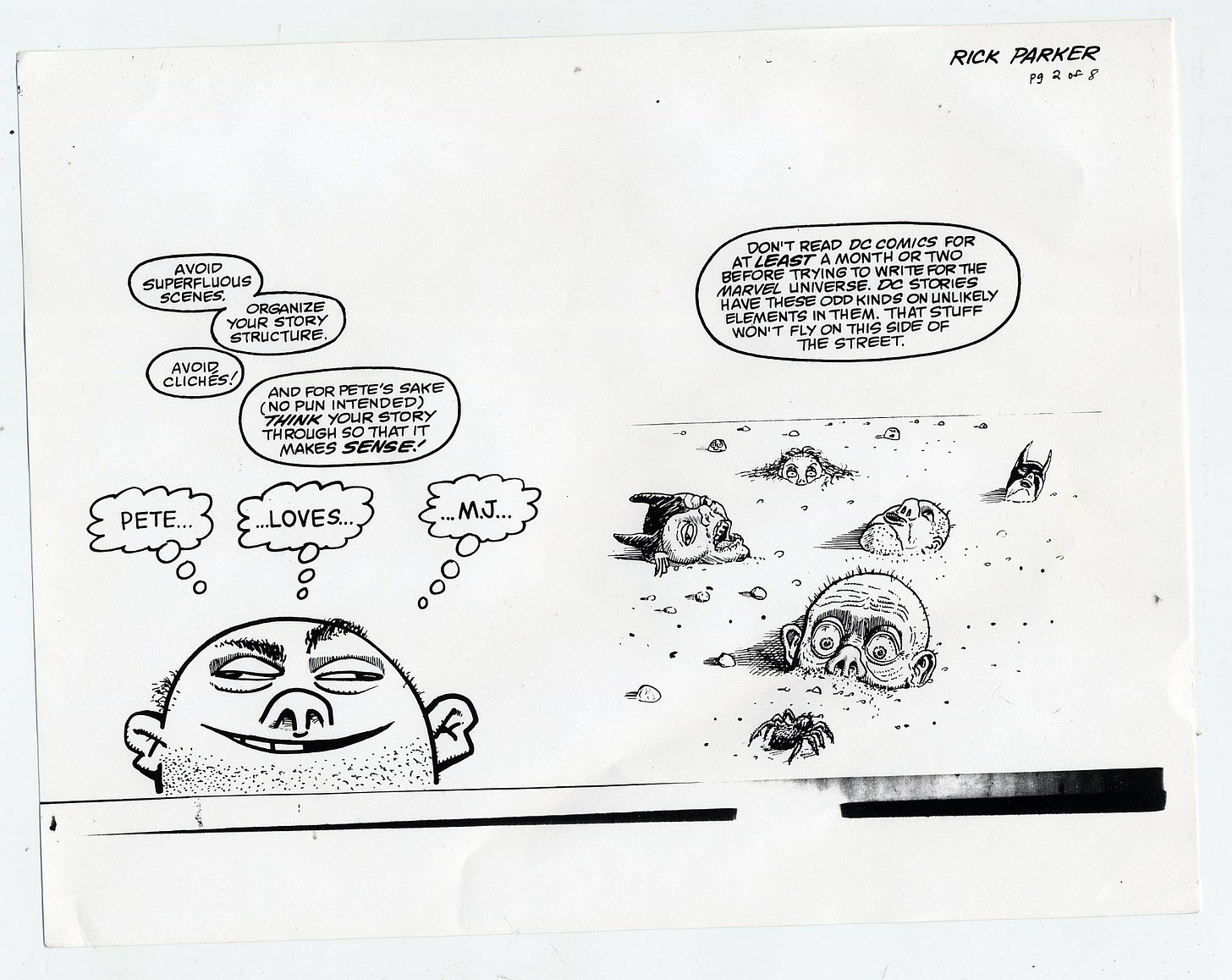
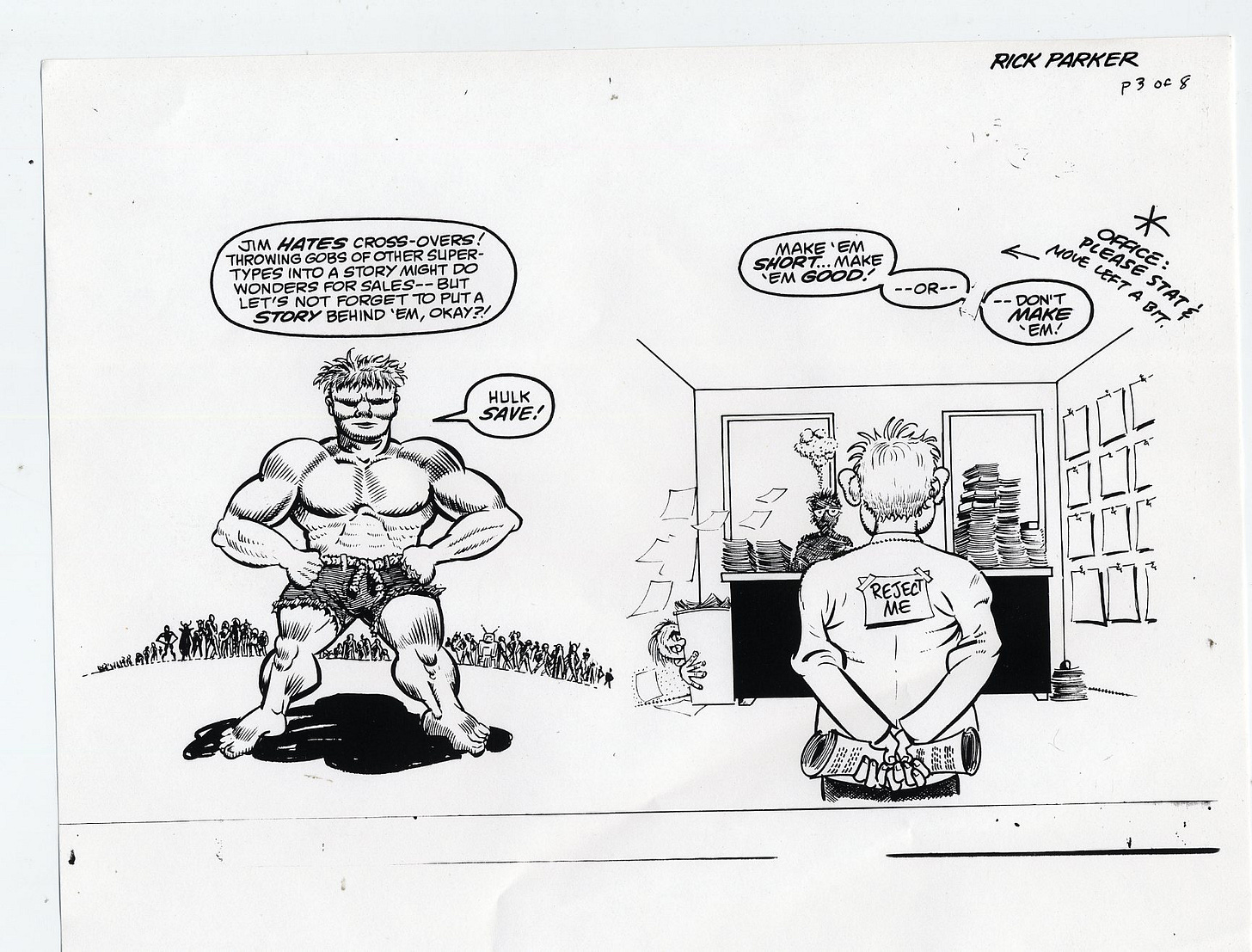
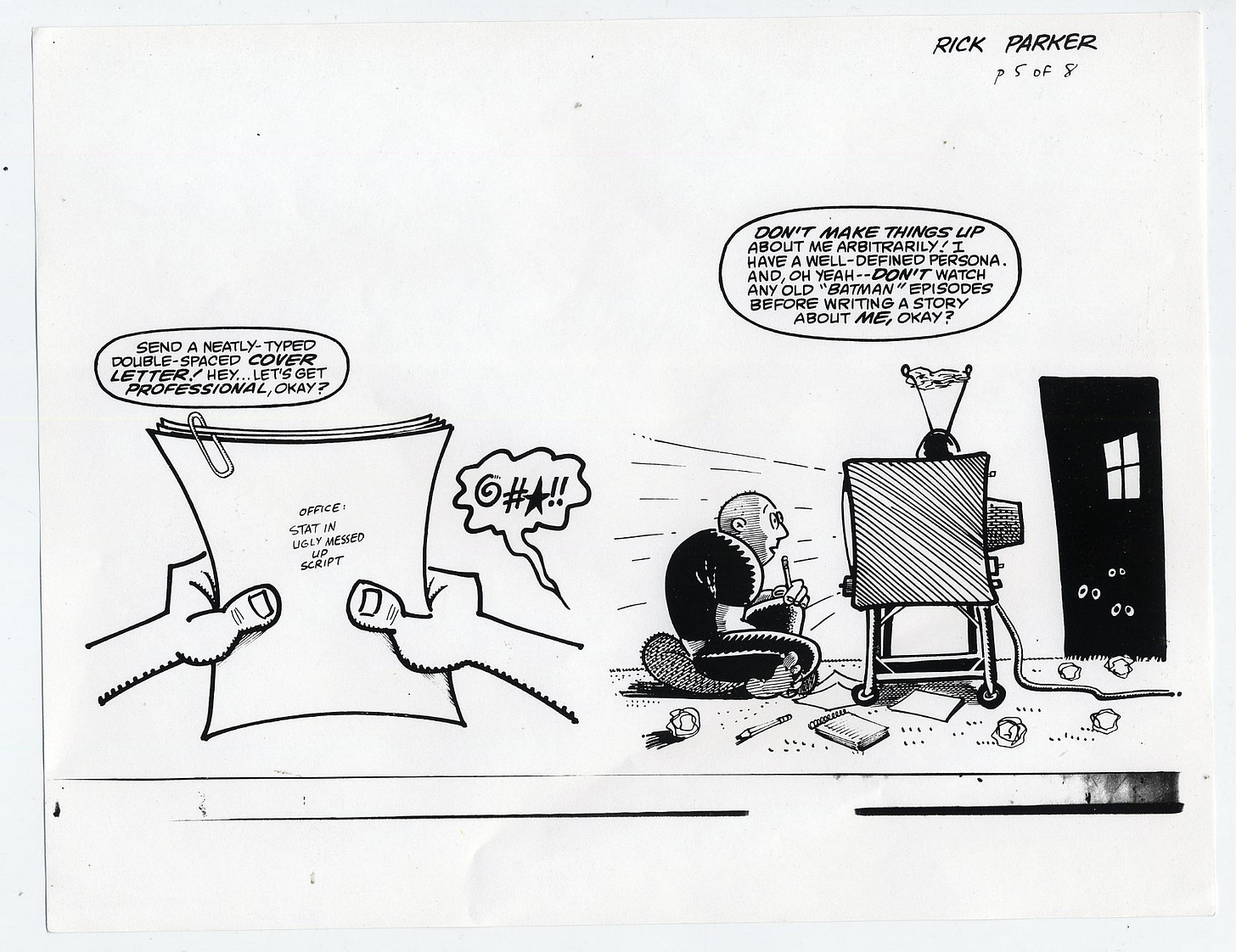
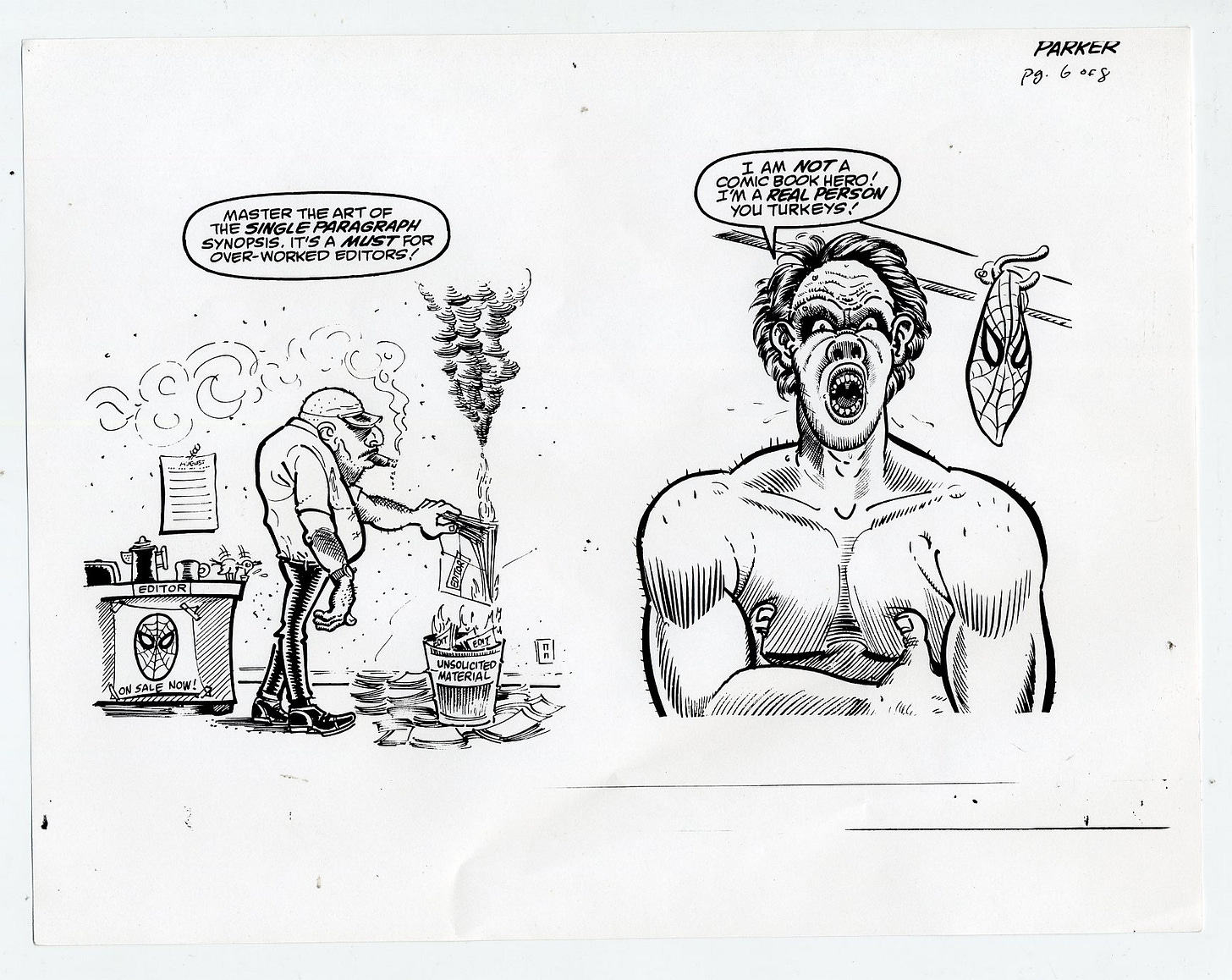

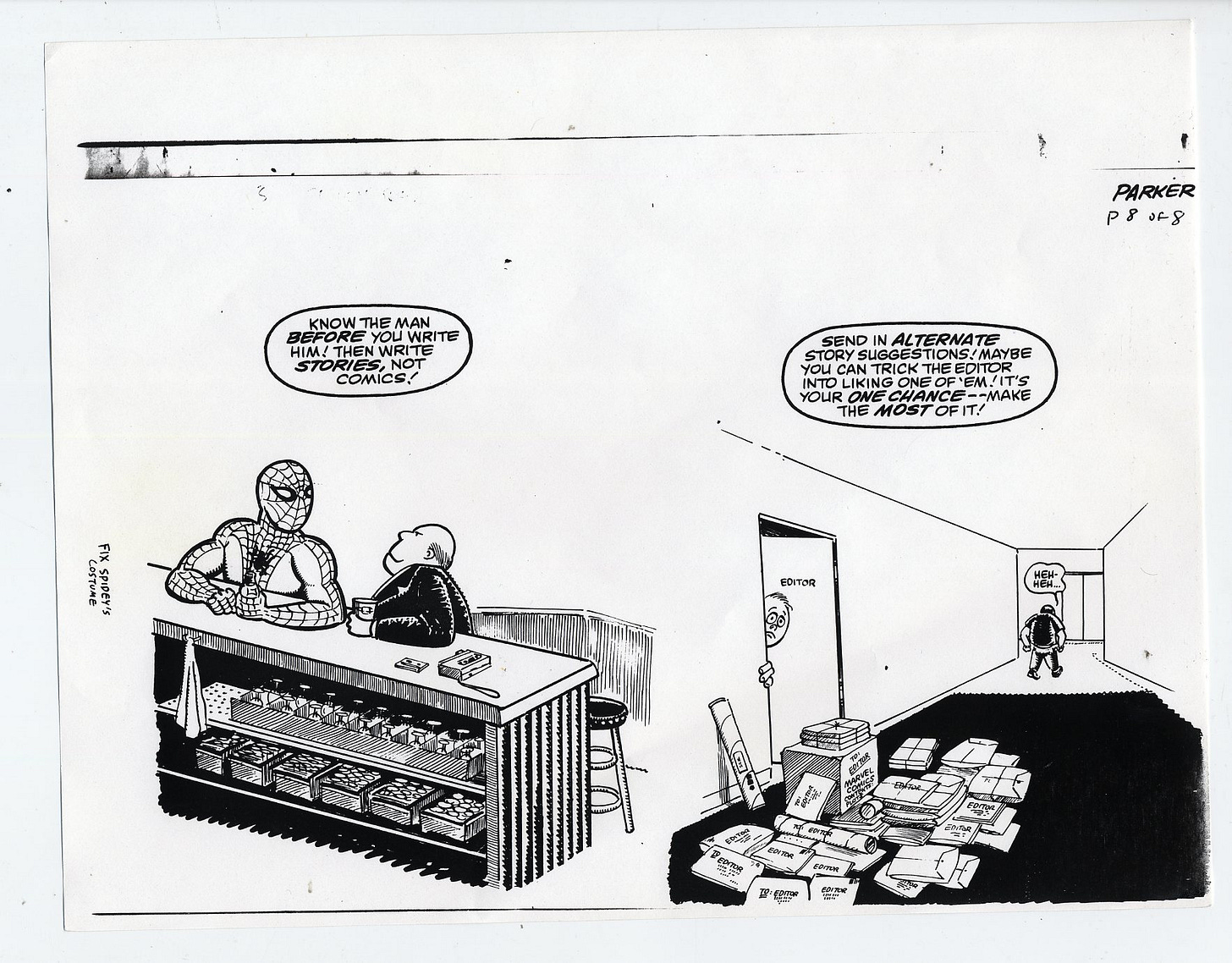
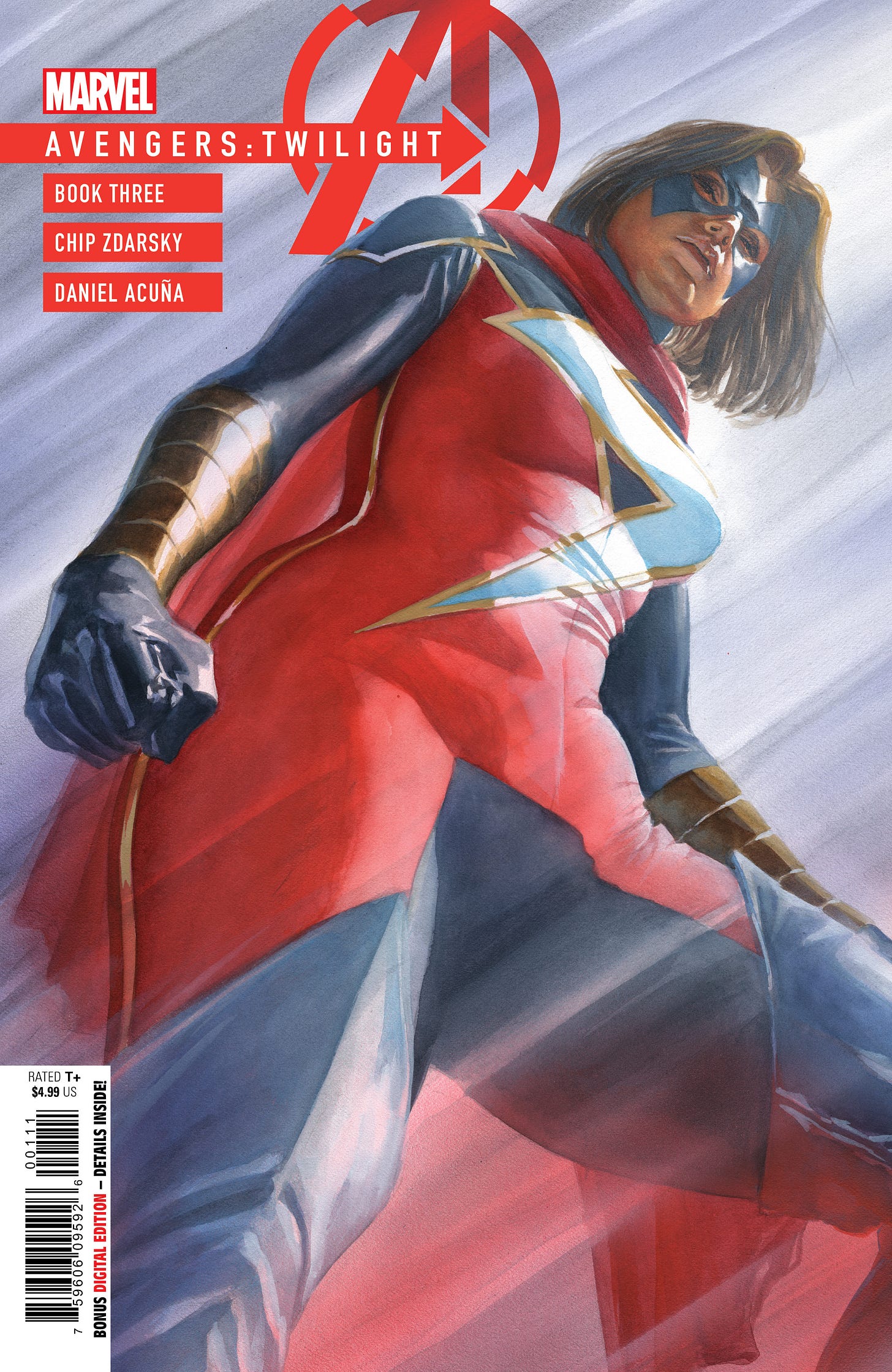
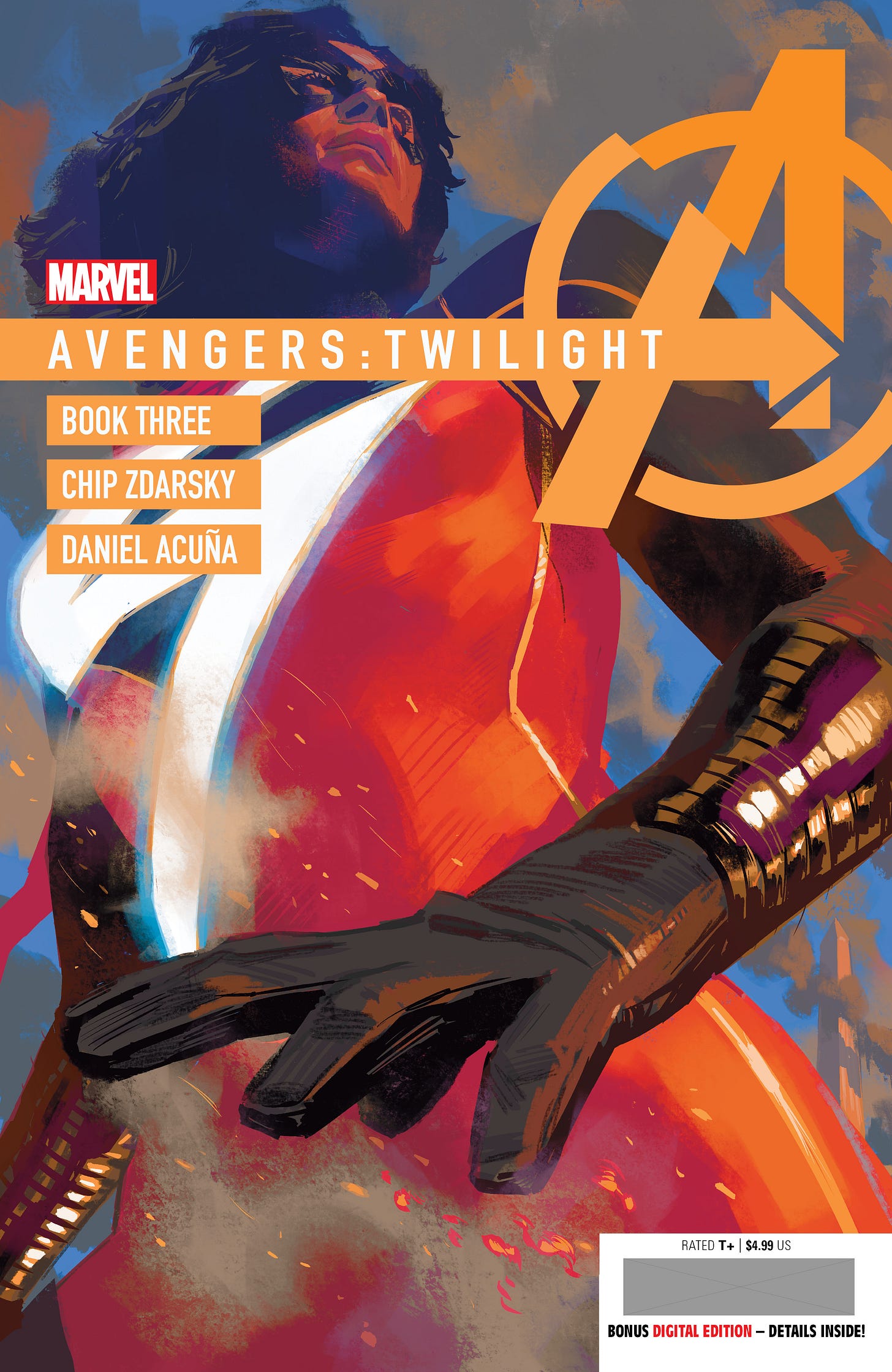
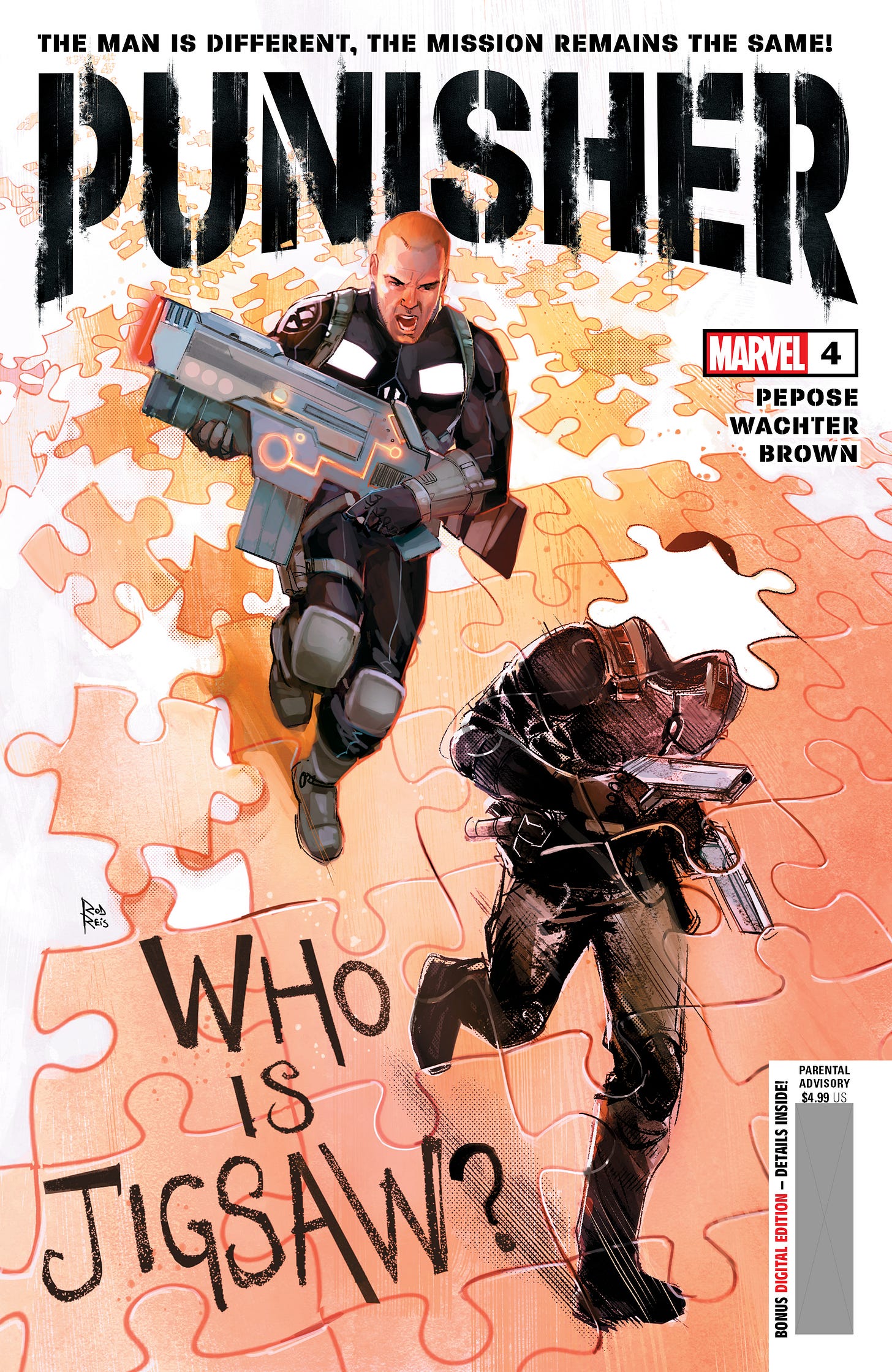
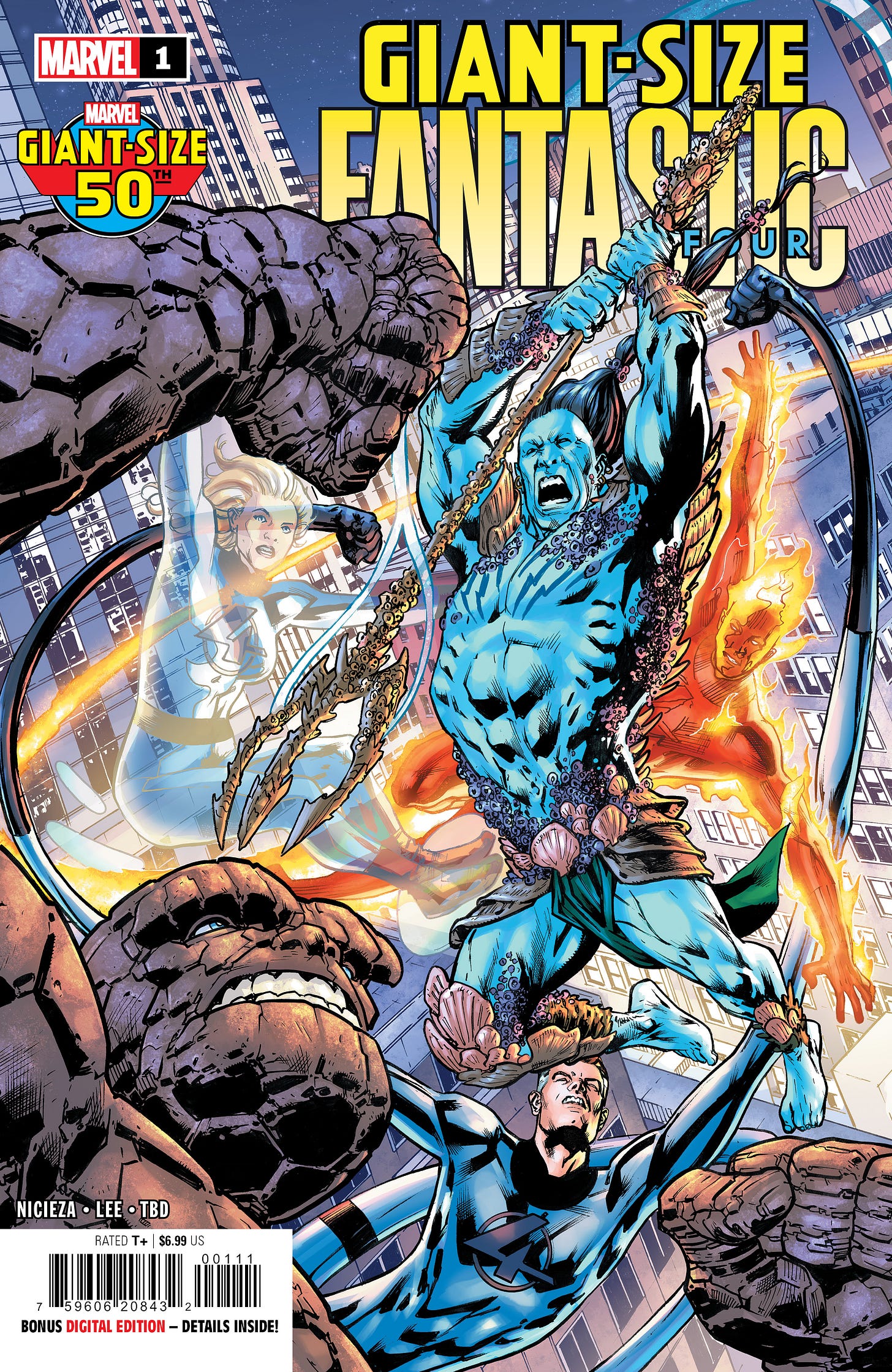

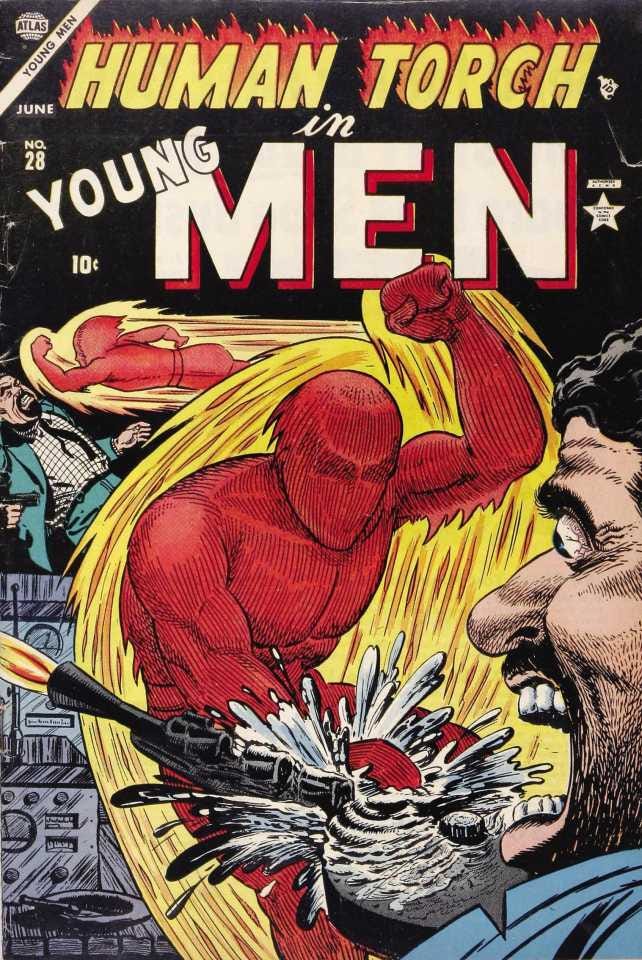
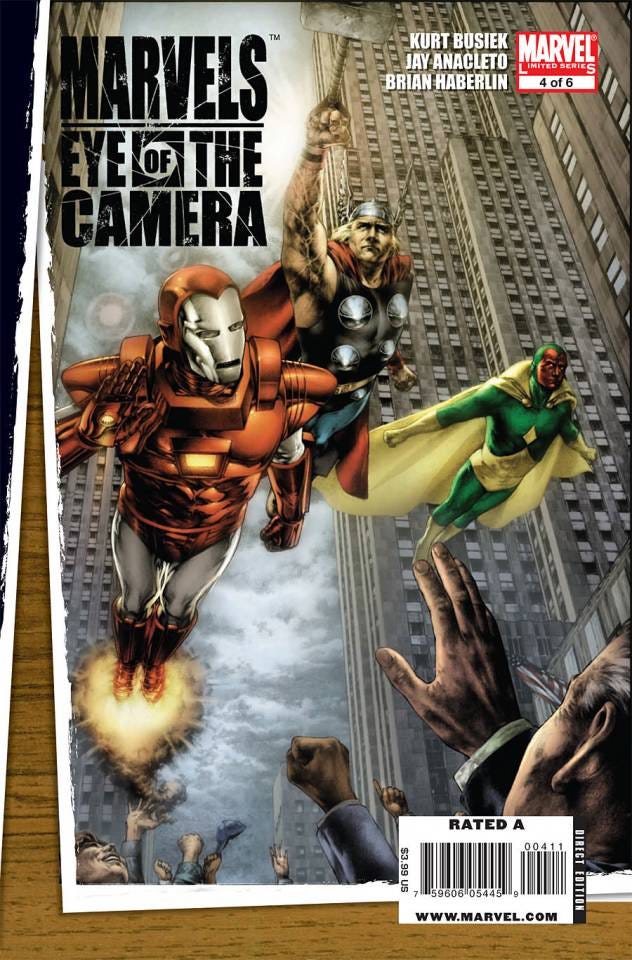

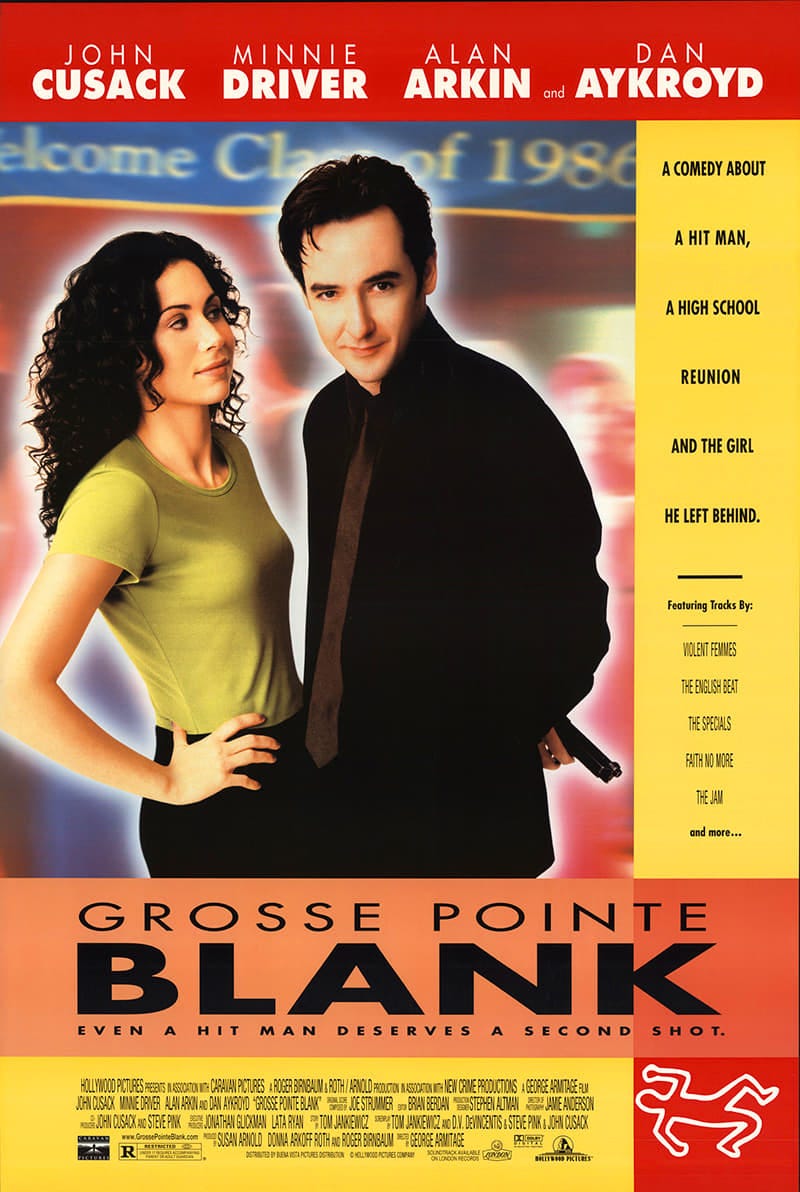
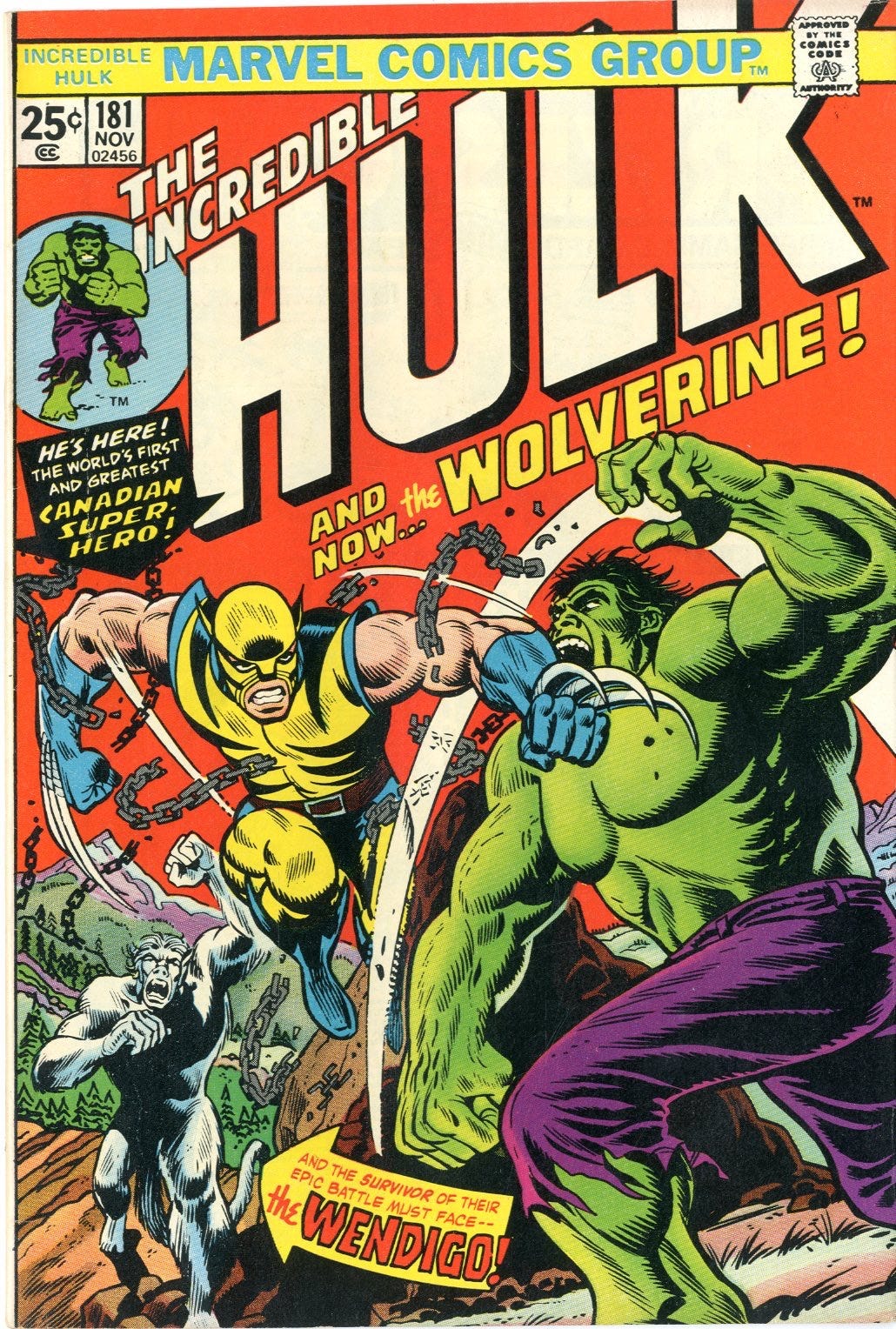
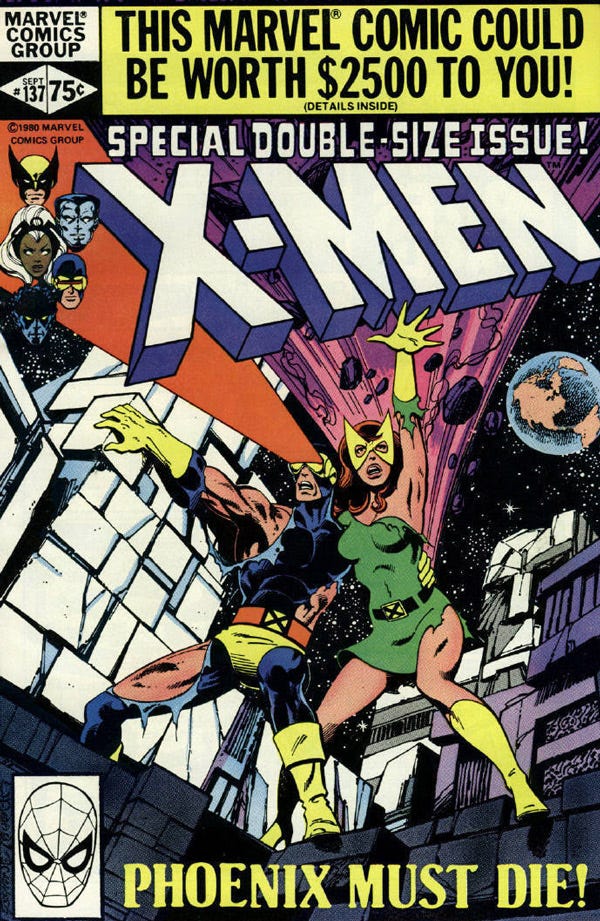
Hell yeah Grosse Pointe Blank rocks. Good call, Tom. Everyone should watch it,
On the point about the reality of authors/artists, there is an artist whose work in a collected edition I discovered about two years ago and LOVED.... and then I found out that his political views were just shy of total bash*t crazy. I go through a tug of war every time I see the book on the shelf - I want to keep it bc I love everything about it.... but seeing That Name causes me to shake my head and want to donate it to charity. Maybe the lesson is -- it's better not to know what an author's or artist's personal views are on anything other than what they put on the page. Having said that, it IS an interesting phenomenon to have grown up reading various authors' works only to encounter them on social media and see the reality of who they are. In some cases, sure they disappoint, but I think I've found more often than not, that I am re-impressed with who they are as actual people.